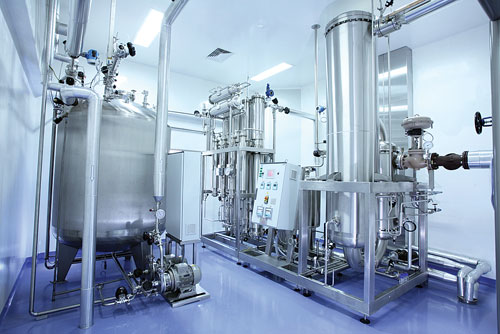The bioproduction market has been posting solid growth for years driven by increasing sales of biological products. Pharma’s increasing reliance on biological molecules to fill its pipelines has boosted this trend.
Scientia forecasts that biologics, with sales of $110 billion in 2008, will grow more than 8% through 2014, reaching sales of over $178 billion. We believe the bioproduction market will keep pace with the overall biologics market and grow from $18 billion in 2008 to over $27 billion in 2014.
In contrast, chemically synthesized drugs are likely to see flat to declining revenues in the same time period.
In the past, most companies kept biomanufacturing in-house to control personnel, production schedules, intellectual property, quality issues, and to meet regulatory requirements. Outsourcing was used primarily by smaller companies lacking the financial and technical resources needed to manufacture their own products or by larger companies needing to supplement production capacity for new, more sophisticated technologies. Even today, nearly 80% of bioproduction is performed in-house.
Going forward, however, we expect outsourcing to increase more than two-and-a-half-fold among both large and small players by 2013. The drivers for additional outsourcing are the increasing complexity of biologics and greater investment required for production.
As second-generation biologics such as monoclonal antibodies replace first-generation therapeutic proteins, sophisticated mammalian cell culture techniques are required. This type of production requires greater capacity and specially trained personnel, which makes outsourcing more attractive than in-house production.
Recognizing the market opportunity, contract manufacturing organizations (CMOs) will, by 2012, have augmented their mammalian cell culture production capacity by more than 90% over 2008 levels.
While many large drug developers will choose to outsource for economic reasons, smaller biotech companies will increasingly need CMOs to manufacture their products. In part, this is because, as a result of recent pharma mergers, there are fewer large pharma companies with which biotechs can partner for production.
In the past, most biologic alliance deals have transferred the manufacturing responsibility to the larger partner for later stage clinical trials and commercial quantities. These days, newly merged pharmaceutical companies have greater competition for finite manufacturing production capacity.
In-licensed biologics must compete for production capacity against internally developed drugs and against the larger portfolio of in-licensed compounds that each of the larger pharmaceutical companies manages. Due to these pressures, CMOs will continue to step in to provide both production capacity and technical expertise, which many of the biotechs lack.
Biosimilars represent the wild card for the bioproduction market. The attraction of the market is that nearly $30 billion in sales of current biologics will have lost patent protection by 2014. These include many blockbusters.
While Europe has had guidelines for approving biosimilars since 2005, the U.S. enacted a regulatory framework only this year when the FDA was given the authority to approve biosimilars as part of the new healthcare reform bill.
Assuming U.S. regulatory approval, one of the key unknowns for biosimilars is market acceptance, which will dramatically impact the size of the bioproduction market. In the European market, where 13 biosimilar products had been approved as of 2009, the combined sales of these products has been less than $200 million.
In the major categories of drugs such as erythropoietins, growth hormones, and granulocyte colony-stimulating factors where biosimilars have been available for several years, biosimilars account for only 2–3% of total sales. Nevertheless, biosimilars have had a dramatic impact on market pricing, leading the branded equivalents to reduce pricing by up to 20% and decreasing the market value by nearly $500 million in the past three years.
Another issue will be the effectiveness of innovator companies in biologic life-cycle management. Biosimilars will have to compete against new patent barriers erected through new product formulations, new dosage formulations, and new indications with labeling exclusivity.
It remains to be seen whether these tactics will be effective in keeping biosimilars as minor entrants whose impact is felt primarily in pricing or if biosimilars will take the vast majority of product volume from the branded products as is the case with chemically synthesized generics. If the latter scenario comes to pass, the bioproduction market could grow to $27.5 billion by 2014—half a billion dollars more than Scientia’s initial projections.
Amit Agarwal ([email protected]) is a partner, and Michael Omartian is a senior analyst at Scientia Advisors.


